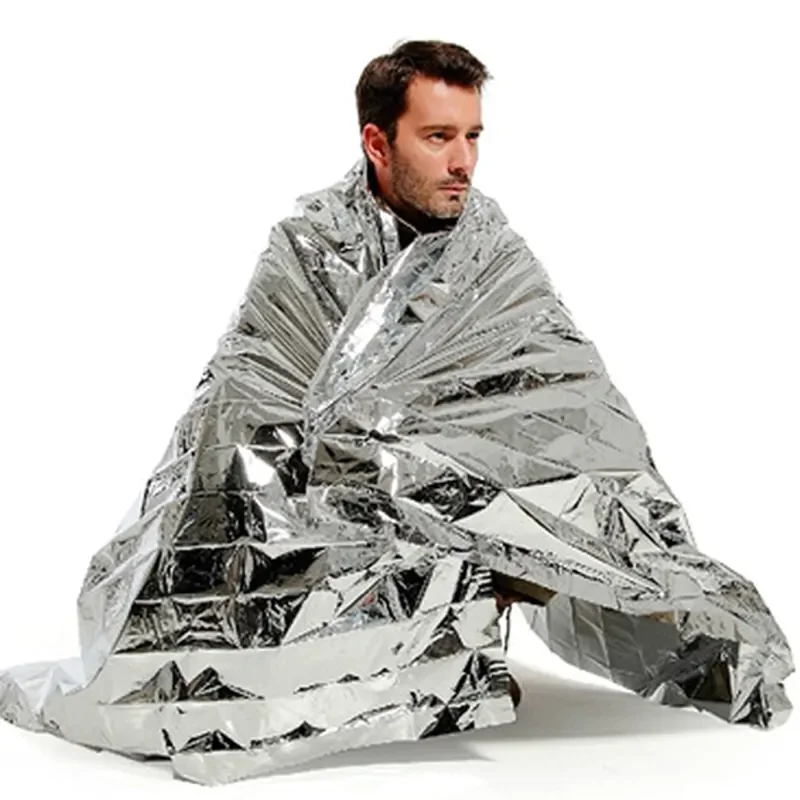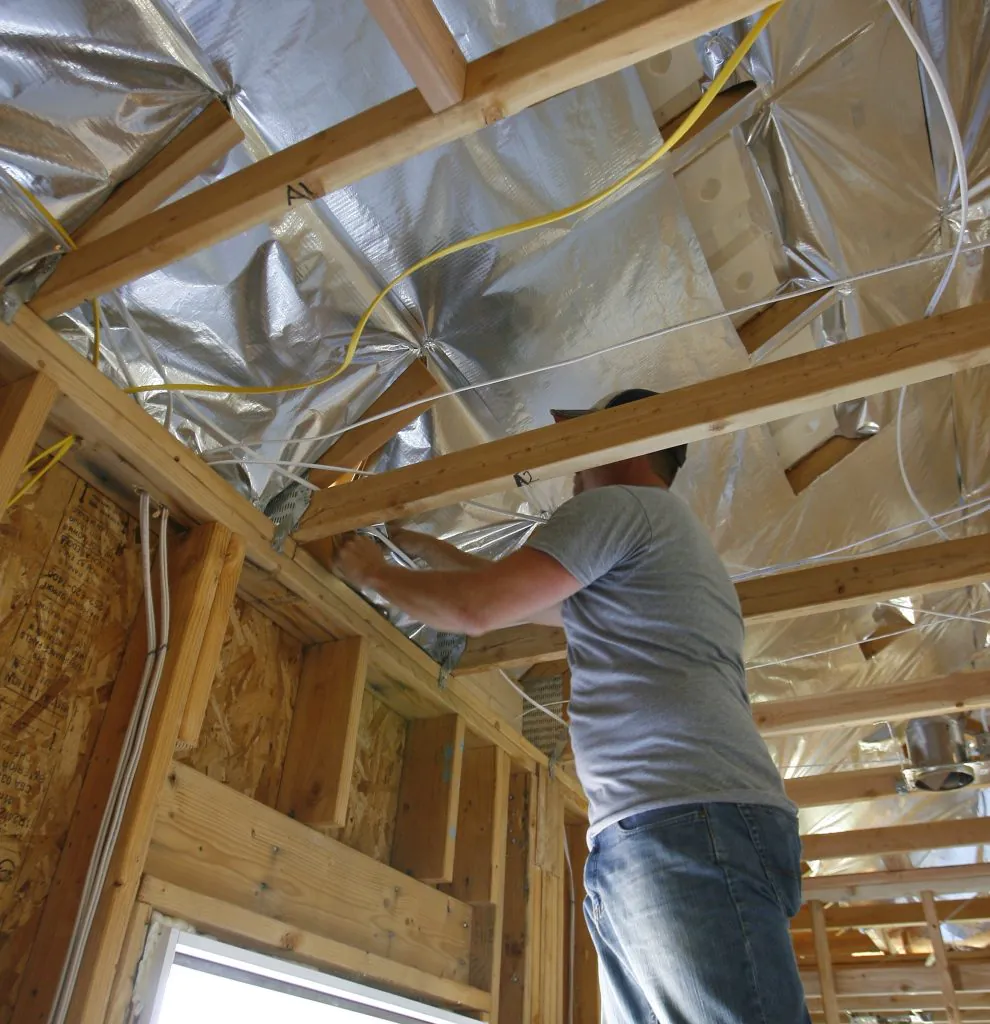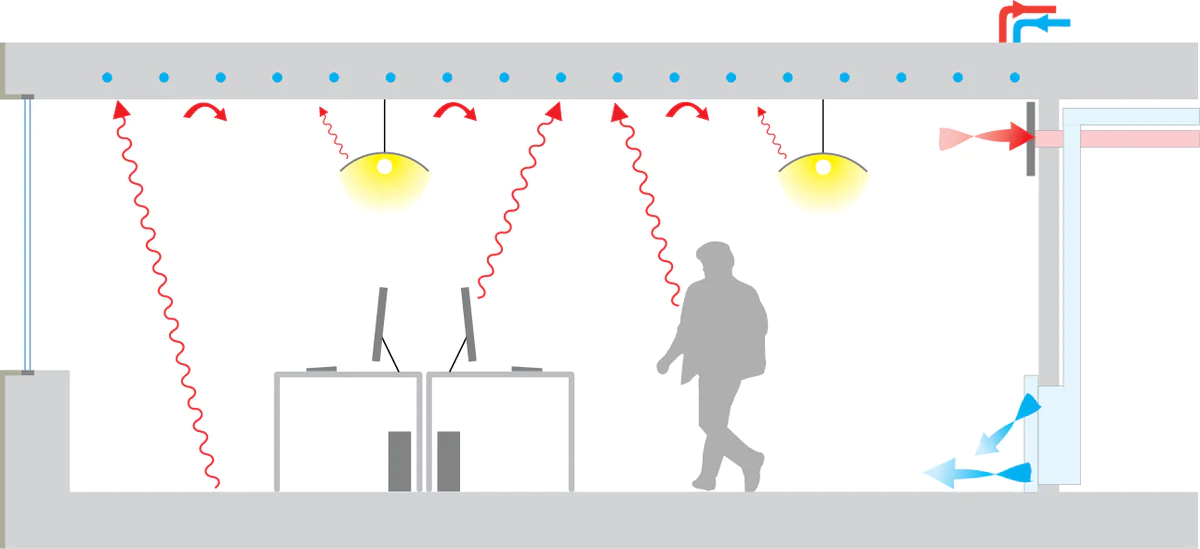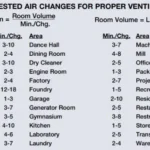Around this time of year, many of us may wish we had a nice fireplace to warm ourselves up. Even though we don’t touch the flame, we still feel the heat from it. That’s possible because of radiant heat transfer, also known as radiation.
There are three means of transferring heat: conduction, convection, and radiation. Conduction refers to the transfer of heat via direct touch. If you touch a hot pan, you’ll burn yourself because it transferred its heat to your hand via conduction. Convection relies on a fluid (like air) to move heat. Some of you may have convective ovens, which cycle warm air through the oven to heat your food. Radiation happens when heat “rides” on electromagnetic waves. For example, the sun’s radiation can pass through a glass window and heat a room.
All bodies radiate, absorb, and reflect heat to some extent. Theoretically, fully reflective or absorptive bodies may exist, but we don’t see them. So, everything in a building gives off heat, especially our bodies. When we wonder why our homes and businesses get so hot, we may have to think about radiant heat and its sneaky effects. Once we understand how radiant heat works inside buildings, we can understand how a building’s design affects our comfort. Then, we’ll be able to figure out how to get the most out of the HVAC equipment in our homes and businesses.
Table of Contents
HOW HUMANS GIVE OFF HEAT
Just as we absorb heat from everything around us, we also give off heat via conduction, convection, and radiation. We also transfer some of our body’s heat to our sweat, which evaporates off our bodies.
Of all those heat transfer methods, radiation makes up about 60% of the heat we transfer from our bodies! That’s why you start to feel very warm in places with lots of people in a building, such as a church service, a large gathering with friends and family, or an indoor concert. When all of those people radiate their heat in a small space, it can start to feel warm and stuffy inside.
However, we can use our bodies’ heat to our advantage when it’s cold. Have you ever heard of a space blanket?

They look like giant tinfoil blankets and are a bit of a fashion disaster. But when we wrap them around our bodies, they reflect most of our heat back towards our bodies. They’re a must-have in cold environments with poor heating!
HOW A BUILDING’S DESIGN AFFECTS RADIANT HEAT TRANSFER
We’ve already covered one way that heat enters buildings: through windows.
The sun gives off several waves, including visible light and UV. Those waves travel to the earth and can slip past windows. The windows may reflect some of the heat and light, but most of it passes right through the glass. So, rooms like lanais heat up very quickly because they allow light and heat to pass through easily. That’s the same reason why curtains and blinds can keep a room cool; the curtains or blinds help reflect or absorb heat before it passes into a room. (If you have dark curtains, they can get pretty warm!)
Insulation also affects radiant heat transfer in buildings. Buildings with reflective insulation (like the radiant barrier in the picture below) don’t allow heat to pass into the building easily.

The barrier looks like a giant space blanket! Radiant barriers reflect the heat attempting to enter the building because they have low emissivity. Emissivity refers to the ability of an object to absorb and emit radiation; objects with an emissivity of zero reflect all radiation, and objects with an emissivity of one absorb all radiation and emit lots of it.
Radiant barriers have a very low emissivity, as do space blankets, tinfoil, and aluminum. Humans have an emissivity of around 0.95, and polished aluminum has an emissivity of around 0.05! Many houses in Florida have a wooden base, and wood has an emissivity of 0.86-0.9. On top of that, drywall has a similar emissivity, so there’s a lot of heat absorption and radiation going on within the structure of a building. So, a radiant barrier beneath the roof decking can reflect heat and prevent it from getting into spaces like attics and crawl spaces. (Although it doesn’t work if the radiant barrier has no air gap.) When a home has a hot attic, that heat can transfer into the occupied space, which isn’t very comfortable.
WHERE DOES THE A/C UNIT COME IN?
So, since radiation is a major source of heat transfer in the home, then the A/C unit must do something to control it, right?
Actually, the A/C unit does pretty much nothing to control radiation! It only controls heat transfer via convection, which is when heat energy moves via a fluid like air. The way in which an A/C or fan moves heat energy may make us feel more comfortable. After all, the evaporation of your sweat has a cooling effect on your body. In fact, ceiling fans don’t cool the space down at all! They just move the heat towards either the top or bottom of a room, depending on the direction they spin.
But where is most of the heat in a building coming from? It’s coming from radiation, whether the source is the sun, your body, or furniture. The best way to combat the sneaky effects of radiant heat transfer is by adding reflective insulation into building designs and making the HVAC system work with the design’s strengths and weaknesses.






